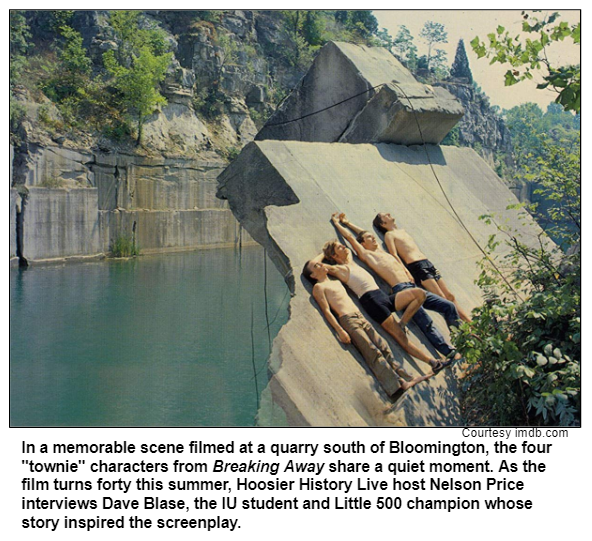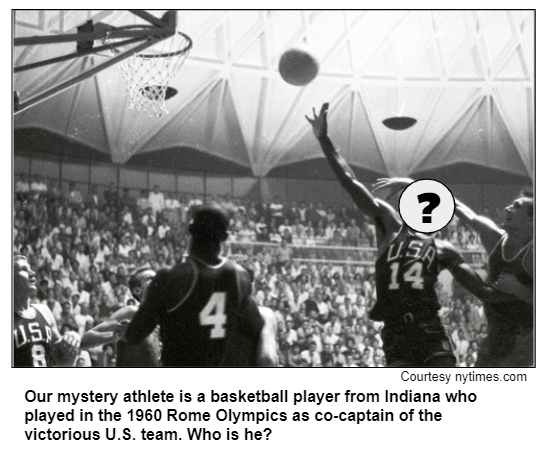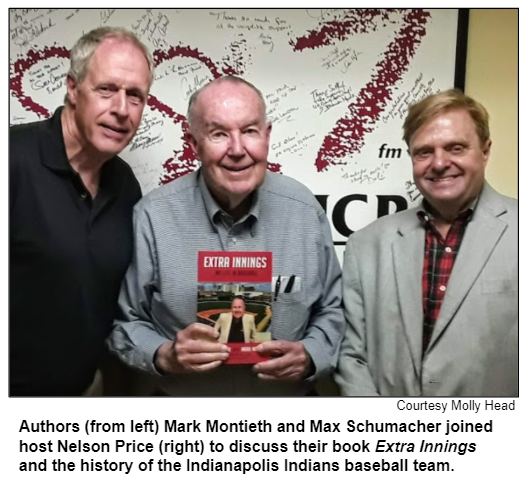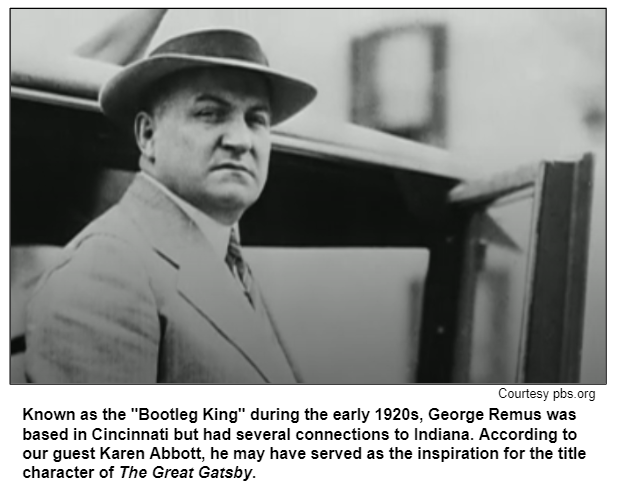
Saturdays, noon to 1 p.m. ET on WICR 88.7 FM.
Or listen live from anywhere on WICR Online!
Our call-in number during the show: (317) 788-3314
August 17, 2019
Breaking Away at 40 with Dave Blase
If the decades seem to have zipped by with the speed of a competitive cyclist, brace yourselves: The movie Breaking Away, filmed in and around Bloomington, opened in theaters across the country 40 years ago this summer.

Now 79 years old, Dave Blase is retired after a long career as a biology teacher, including 39 years on the faculty of Arlington High School in Indianapolis. Dave Blase will be Nelson's studio guest to share insights about his early life (he grew up in Speedway), the impact of Breaking Away (in which the aria-singing protagonist is named Dave Stoller), and how his life has unfolded during the 40 years since the release of the movie.
"Dave had this fanatical attachment to the sport," Tesich recalled in an interview with Nelson, our host, a few years before the screenwriter's death in 1996. "It was almost a romantic involvement."
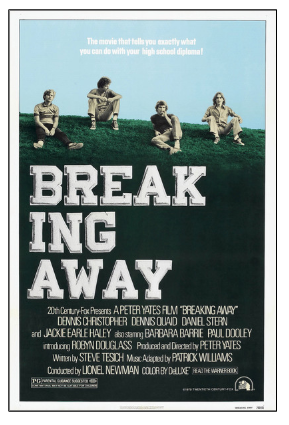
In Breaking Away, the "townie" characters on the scrappy Little 500 team hail from working-class families who cut limestone in the quarries near Bloomington. The team members, who call themselves "Cutters," feud with preppy IU students, competing not only in the Little 500, but also for the attention of sorority members.
In interviews over the years, Dave Blase has said that during his boyhood in Speedway, he had minimal interest in sports, including cycling. That changed at IU, culminating in his spectacular performance in the Little 500 in 1962, in which he rode 139 of the 200 laps and set campus records.
With only a $2.4 million budget - modest even for the time - Breaking Away was filmed in Bloomington and elsewhere in Monroe County during the summer and fall of 1978, then released the next year.
Steve Tesich, the screenwriter, was born in 1942 in what was then Yugoslavia. At age 14, he immigrated with his family to East Chicago, Ind. After winning the Oscar for Breaking Away, Tesich wrote the screenplay for Four Friends (1981), an autobiographical movie about an Eastern European immigrant who comes of age in northwestern Indiana.
"I had heard from my frat brothers about a freshman who showed up on campus with a 10-speed bicycle, which was unusual in those days," Dave Blase told Nelson several years ago, referring to his initial meeting on campus with Tesich in the fall of 1961.
Breaking Away, though, is set in the late 1970s. The film, in which Dennis Christopher played the Dave Stoller character, was such a success that it inspired a short-lived TV series starring teen idol Shaun Cassidy in the role.
By then, Dave Blase was teaching at Arlington High School. Although he had continued to race competitively after he graduated from IU and through his 20s, he found that the occasional prize money he won was not enough to support a family. He had met his wife Yolande, who is Dutch, during a bicycling excursion through Europe.
The two now live on the northeast side of Indianapolis and are the parents of two grown children.
Roadtrip: Windmill Museum in Kendallville
Guest Roadtripper, retired bookshop owner and world traveler Kathleen Angelone invites us to "catch the wind" at the Mid-America Windmill Museum in Kendallville, north of Fort Wayne in northeastern Indiana. The museum features a "path of mills" in a bucolic setting and includes more than fifty historic windmills from all over the country.
Windmills played an important role in American history, Kathleen informs us, and the museum has taken on the mission of telling "the story of wind power from its origination through the American windmill to the present day."
The Mid-America Windmill Museum was established in 1992 and displays all of the windmills manufactured at Kendallville's Flint and Walling Company, which has been in business for 153 years (but no longer manufactures windmills).
So if the role of wind power in history sets your heart to fluttering, be sure to join Kathleen on this breezy Roadtrip. You'll be blown away!
History Mystery
The 1960 Rome Olympics, in which Italian athletes swept many of the medals in cycling and inspired our guest Dave Blase, also featured an outstanding performance by a basketball player from Indiana.
He helped the U.S. team capture a gold medal, the country's fifth straight in the Summer Olympics. The basketball player was co-captain of the victorious team in the Rome Olympics.
Even before the Olympics, he had become a household name in Indiana. After the Olympics, he enjoyed a sensational, 14-year career in the NBA.
Question: Who is basketball player from Indiana who helped lead the U.S. team to victory in the 1960 Olympic games?
The call-in number is (317) 788-3314. Please do not call into the show until you hear Nelson pose the question on the air, and please do not try to win the prize if you have won any other prize on WICR during the last two months. You must be willing to give your name and address to our engineer and be willing to be placed on the air.
The prizes this week are two admissions to the Eiteljorg Museum, courtesy of the Eiteljorg Museum, and two admissions to the Indiana History Center, courtesy of the Indiana Historical Society.
Baseball history hits a home run!
Nelson Price, host and historian
Molly Head, producer/general manager, (317) 927-9101
Michael Armbruster, associate producer
Cheryl Lamb, administrative manager
Richard Sullivan, senior tech consultant
Pam Fraizer, graphic designer
Garry Chilluffo, special events consultant
Please tell our sponsors that you appreciate their support!

 Acknowledgments to Monomedia, Visit Indy, WICR-FM, Fraizer Designs, Heritage Photo & Research Services, Henri Pensis, Aaron Duvall, Chloe Tyson, and many other individuals and organizations. We are independently produced and are self-supporting through organizational sponsorship and through individual contribution at the yellow button on our newsletter or website. For organizational sponsorship, which includes logos, links, and voiced credits in the show, contact Molly Head at (317) 927-9101 or email her at molly@hoosierhistorylive.org. Our media reach continues to grow via podcasting and iTunes.
Acknowledgments to Monomedia, Visit Indy, WICR-FM, Fraizer Designs, Heritage Photo & Research Services, Henri Pensis, Aaron Duvall, Chloe Tyson, and many other individuals and organizations. We are independently produced and are self-supporting through organizational sponsorship and through individual contribution at the yellow button on our newsletter or website. For organizational sponsorship, which includes logos, links, and voiced credits in the show, contact Molly Head at (317) 927-9101 or email her at molly@hoosierhistorylive.org. Our media reach continues to grow via podcasting and iTunes.
Thank you!
We'd like to thank the following recent, new and renewal contributors whose donations help make this show possible!
- Bruce and Julie Buchanan
August 24, 2019 - coming up
Bootleg King and his Indiana connections
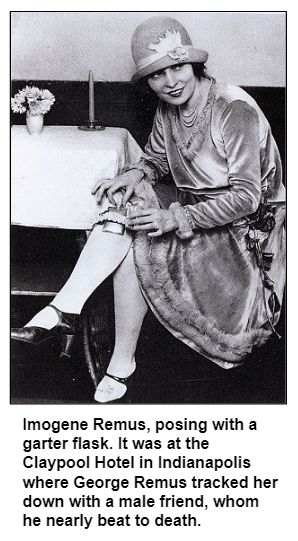
Known as the "Bootleg King" during the early 1920s, George Remus was based in Cincinnati but had several connections to Indiana, including one of his top revenue sources, the Squibb distillery in Lawrenceburg on the Ohio River.
Many of his rum-runners came from Indiana and stayed at "Death Valley," his heavily-guarded farm just west of Cincinnati that served as a storage area for his vast quantities of alcohol.
The posh Claypool Hotel in downtown Indianapolis was one of the favorite lodging spots for Remus and his glamorous wife, Imogene.
The Claypool also was where, in the middle of the night, Remus tracked down Imogene when she was staying at the hotel with a car salesman. Remus, in a jealous rage, nearly beat the salesman to death in the elegant hotel.
The social history, national impact and Indiana connections of the colorful "Bootleg King" will be the focus of our show when New York-based author Karen Abbott joins Nelson by phone. Abbott (as she prefers to be called), is the author of The Ghosts of Eden Park (Crown Publishing), a new book about Remus, his lavish lifestyle and his crimes.
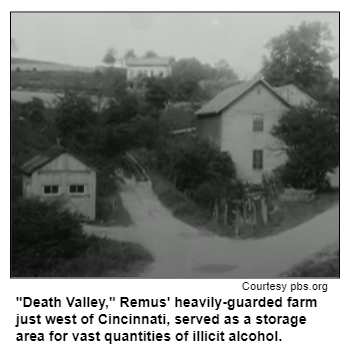
Abbott noted that a courthouse in Indianapolis was the setting for one of his federal trials; in 1925, he was accused of crimes associated with a Jack Daniels distillery.
During the trial, Remus stayed at the lavish Claypool, which, with its rival, the Hotel Lincoln, was the focus of a Hoosier History Live show in March.
According to Abbott, Remus probably was the inspiration for the fictional character of Jay Gatsby, the central figure in The Great Gatsby, the classic novel by F. Scott Fitzgerald published in 1925. Like Gatsby, Remus owned a string of pharmacies, lived in an opulent mansion and, as Abbott puts it, "was obsessed with an enigmatic woman."
© 2019 Hoosier History Live. All rights reserved.
|
